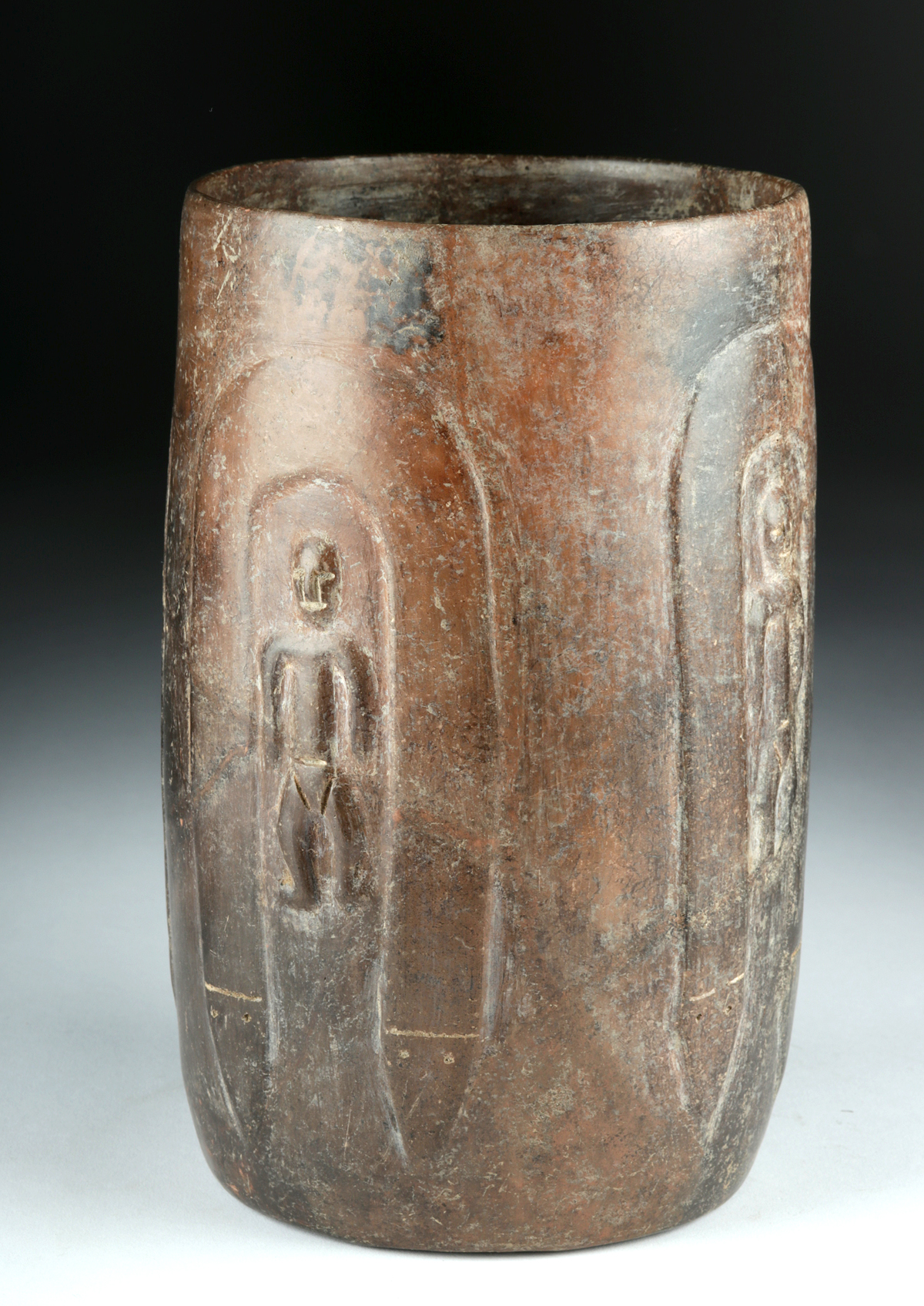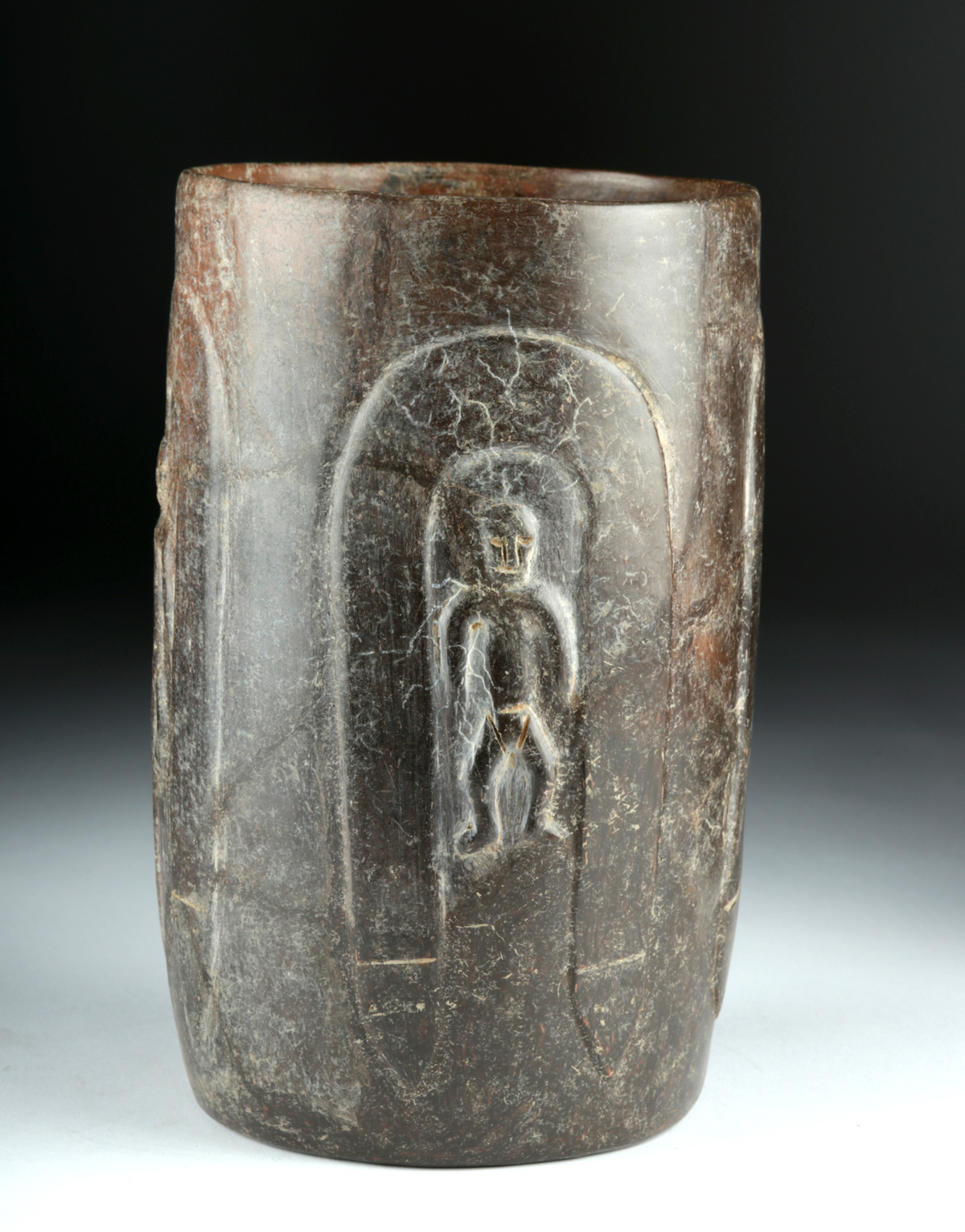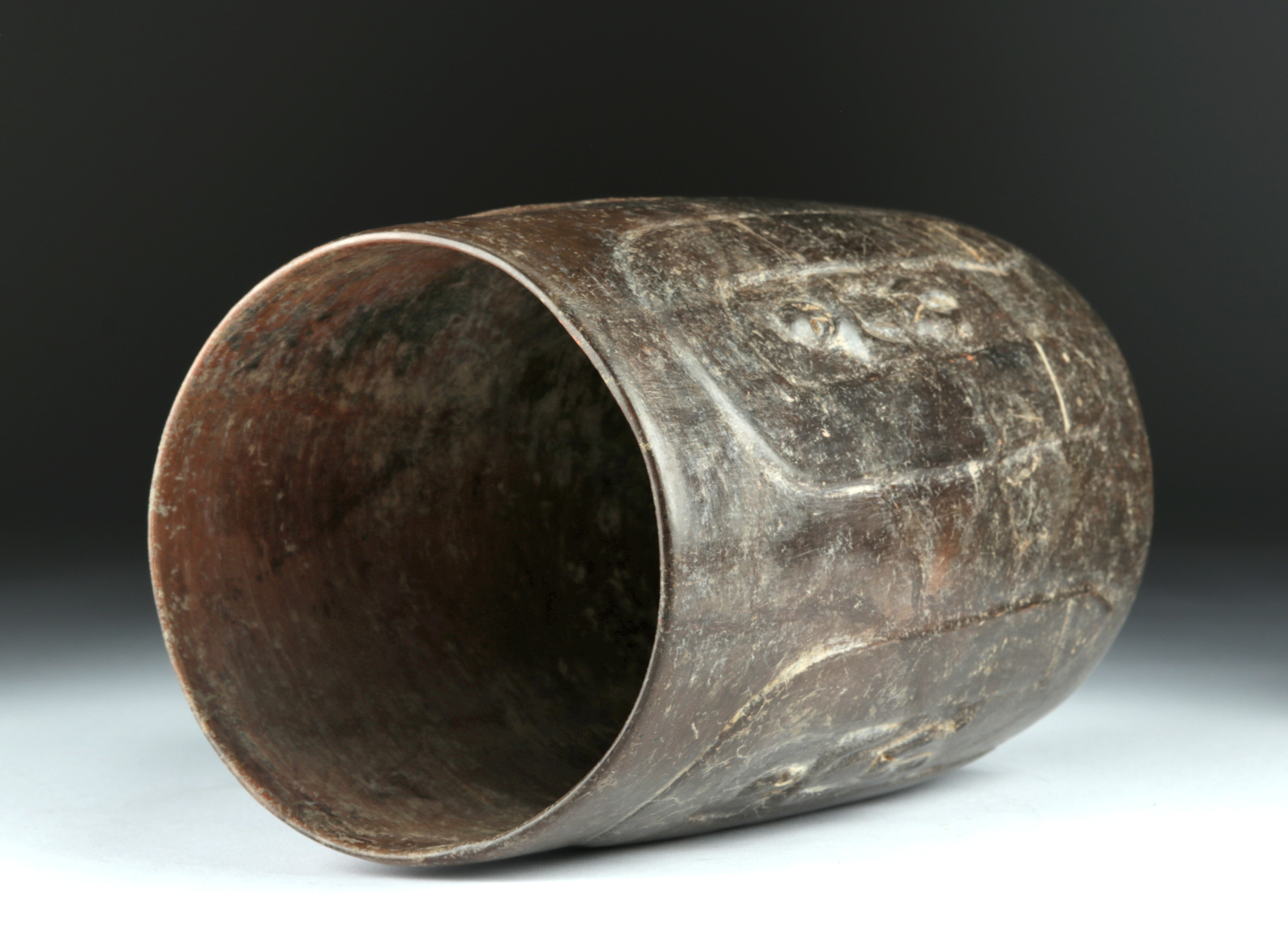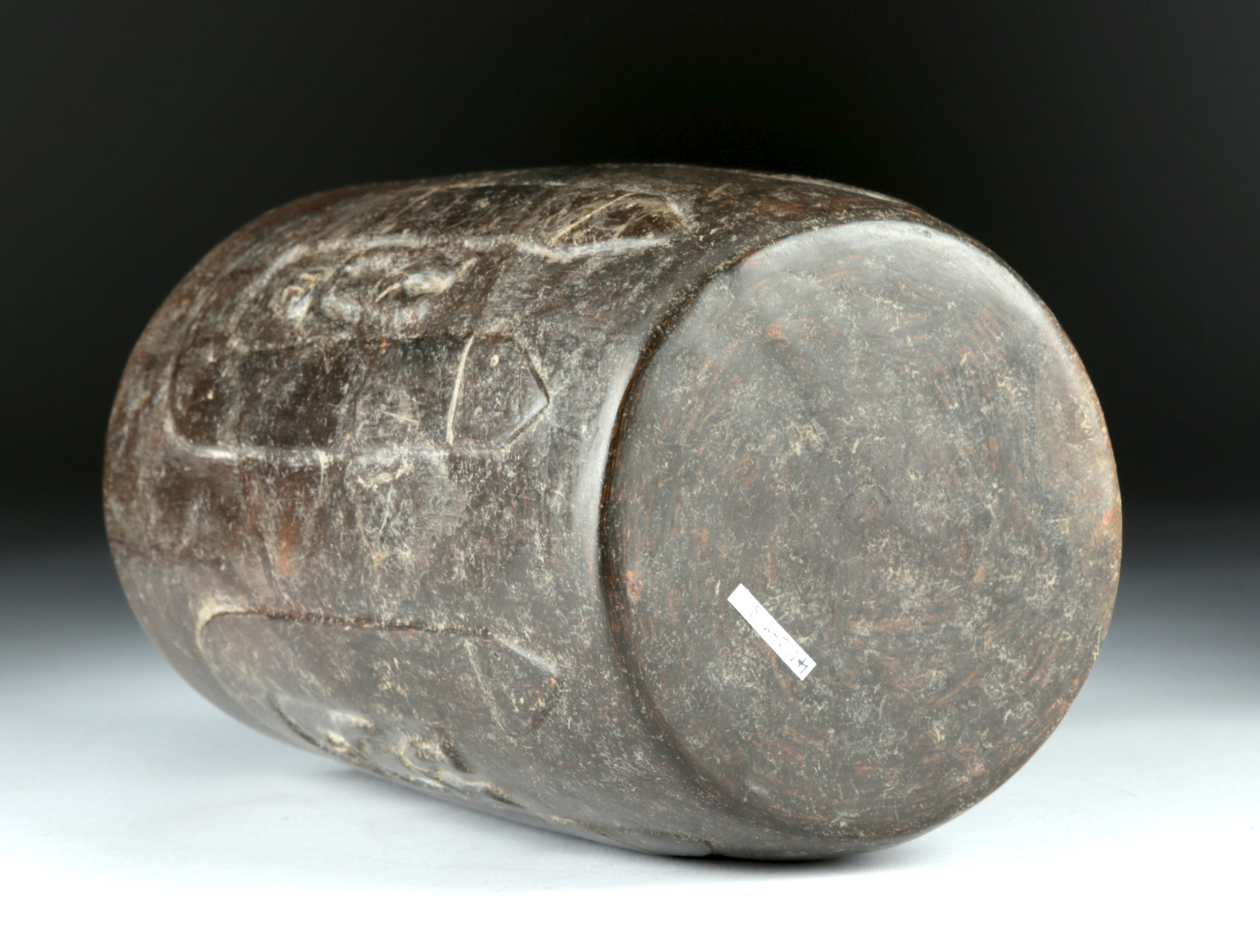Published Colima Brownware Cylinder w/ Figures- Lot 120b, Auction 6/21/2018
Sold
Pre-Columbian, West Mexico, Colima, Comala phase, ca. 300 BCE to 300 CE. A hand-built brownware cylindrical vessel decorated with four reliefs, each one depicting an anthropomorphic figure walking through or standing under an archway created by a double-headed, bicephalic snake. Snake/serpents provide a fascinating element of Pre-Columbian iconography as they were regarded to be a beneficial source of nourishment and at the same time quite deadly with their poisonous venom. Also important to the indigenous was the fact that snakes shed their skin annually thus rejuvenating themselves and serving as symbols of renewal and good health. The existence of two snake heads on the serpents of this piece suggests that they represent the bicephalic serpent which was a signifier of high rank in various Pre-Columbian world views. Size: 6″ in diameter x 9.5″ H (15.2 cm x 24.1 cm)
These two-headed beasts were regarded as sky bands that arched over the earth or surrounded the seas, serving as a passageway for the planets and stars of the celestial realm. This motif decorated articles associated with individuals of high rank, thus associating them with the powers of this mighty creature. According to Peter T. Furst who discussed this exact piece in “Ancient West Mexico – Art and Archaeology of the Unknown Past” one explanation for the two-headed snake imagery may be found in anthropologist Gerardo Reichel-Dolmatoff’s research on the Kogi who reside in the northern hills of the Sierra Nevada de Santa Marta in Colombia. Furst writes, “Kogi shamans say that with a head and eyes at either end, the bicephalic serpent can see at the same time into both the world of humans and animals and that of the gods, linking them with one another and serving for shamans as a bridge when they travel in their ecstatic trance states from the ordinary to the nonordinary realm. The Kogi are the inheritors of numerous pre-Hispanic traditions in the so-called Intermediate Area between Central America and South America, of which some may have been shared by the ancient West Mexicans. Theirs may be only one of several possible explanations for the two-headed snake in Mesoamerica, but one has to admit that it makes a good deal of sense.”
This piece was published in “Ancient West Mexico – Art and Archaeology of the Unknown Past” edited by Richard E. Townshend, published by Thames and Hudson/Art Institute of Chicago, 1998 – page 173, figure 10. The caption accompanying the photograph of this vessel reads, “Cylindrical vase with four reliefs; Colima; Comala phase; earthenware. Private collection. In each of the reliefs on this vase, a human figure walks through an archway formed by what may be the double-headed cosmic snake that figures in the chthonic architecture of some indigenous peoples in Mexico. This figure may symbolize the sun god on his nocturnal underworld passage.”
Condition: Repaired from multiple pieces. Normal surface wear commensurate with age. Nice root marks and mineral deposits.
Provenance: ex-private San Diego, California, USA collector – Published in “Ancient West Mexico – Art and Archaeology of the Unknown Past,” figure 10, page 173.
All items legal to buy/sell under U.S. Statute covering cultural patrimony Code 2600, CHAPTER 14, and are guaranteed to be as described or your money back.
A Certificate of Authenticity will accompany all purchases.
We ship worldwide and handle all shipping in-house for your convenience.






